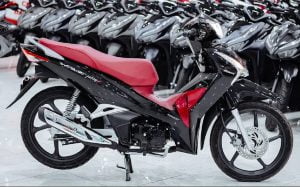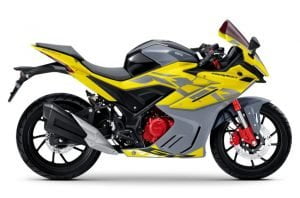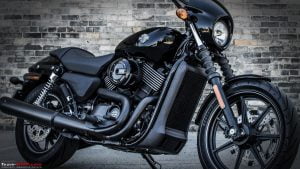Thailand Motorcycles Market is gaining momentum. In Q3 growth speed slowed with July up 13.2% and August down 6.1%, with Year to Date figures at 1.319.110 (+8.2%), the 4th position in the ASEAN region.
Thailand Motorcycles Industry Trend and Perspectives
The crisis is over and the thailandese 2-wheelers industry, the sixth largest largest worldwide is now in a fast growing line, fueled by renovated demand for and by the fast growth of electric segment, started in delay compared with other markets, but now rapidly growing up.
In the last decade the motorcycles market in Thailand declined by over half a million or 25% of the original volume, mainly for the shift of clients towards the 4 wheeler industry. As the pro capita income increased in the country, people searched more for a car (or a pick up) for status and wider functionalities.
The recovery opportunity for the 2 wheeler industry is represented by the resurging demand for individual mobility and by the electrification, which is penalizing the four-wheelers for the correlated high vehicles price.
For this reason and others, we see a positive 2-wheeler market evolution across the next 5 years and already the 2022 supported this view, with a robust performance.
The market was almost positive in the first sixth month of year ended with just over 1 million sales (+10.2%) and one of the best performance in the last 10 years.
In Q3 growth speed slowed with July up 13.2% and August down 6.1%, with Year to Date figures at 1.319.110 (+8.2%), the 4th position in the ASEAN region.
The growth is driven by the scooter/underbone segment (+9.1%) thanks to a strong demand on electric vehicles, with L1 category up 101% and L3 up 114.8%.
The motorcycles segment, which is very small in the country (around 6% of total industry) is declining 14.6%.
Looking at top manufacturer’s performance, Honda is still on top with first half sales jumped up 10.4% thanks to the success of last model year for the Wave 110i and 125.
In second place Yamaha is losing (-3.1%) while the 3rd, Piaggio, is growing slow (+1.2%).
In 4th place GPX (-5.9%) followed by Lambretta (+134.3), Deco (+202%), Suzuki (-18.1%) and Ryuka (-50.1%).


Thailand’s Motorcycles Industry 2022
During the 2022, the demand for new motorcycles and scooter was back in Thailand and the total annual sales have been 1.8 million, a +11.9%, the best out of last 9 years.
The industry is pushed up by the growing demand for electric vehicles. Their segments grew up 211% in the L1 category and 92% in L3. However, the EVs segment is still only the 0.5% and have huge spaces for growing.
In the competitive arena, the market leader is Honda with 1.37 million sales (+11.2%) followed by Yamaha with 284.124 sales (+6.9%) and Piaggio with 47.832 (+45.5%).

Global Production Hub
Thailand is a major motorcycle manufacturing base ranking in 5th place as regard to the production capacity (2 million), after China (23 million units), India (20 million), Indonesia (8 million) and Vietnam (3 million).
Thailand started the 1st motorcycle manufacturing in 1967 under the CKD system.
At the beginning decade of 1990, Thailand promoted the investment of four-stroke engine motorcycle instead of the two-stroke one to reduce emission problem and the production boosted reaching a capacity of 1.75 million annual units. The sales of motorcycles followed the development of the country representing the first device of personal mobility.
In the following years, while introducing Free Trade Agreements (FTA) which caused the cancellation of industrial protection measure, the industry started to export and to evolve in line with the global demand, learning new technologies and adopting state of the art rules for safety and emissions.
Nowadays, there are 7 motorcycle manufacturers in Thailand with total capacity of production at 3 million units per year. They are Honda, Yamaha, Suzuki, Kawasaki, BMW, Triumph and Ducati. Most of them are located in the Central and East regions because they are clusters of manufacturer as well as near to the seaport for export those CBUs.



